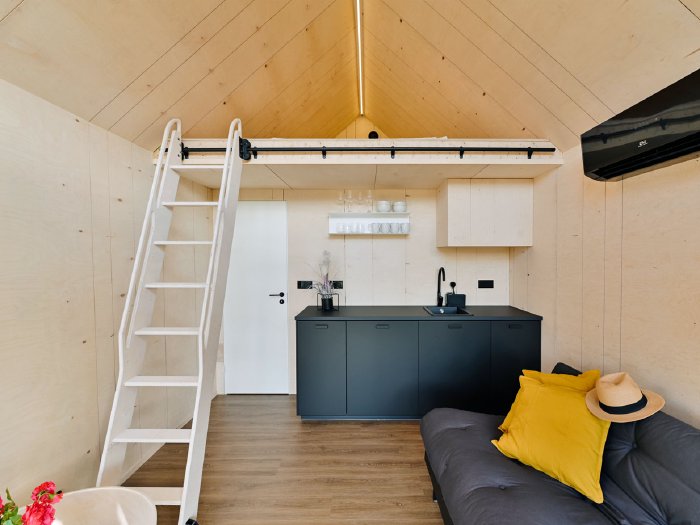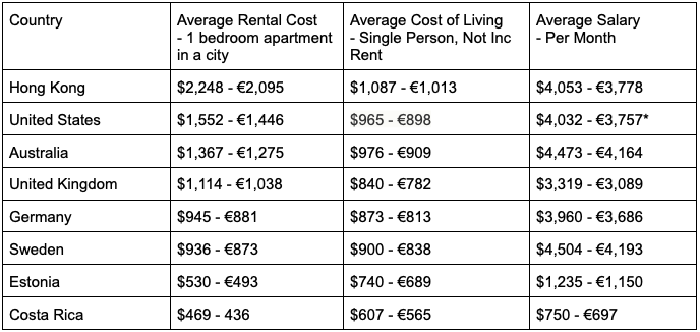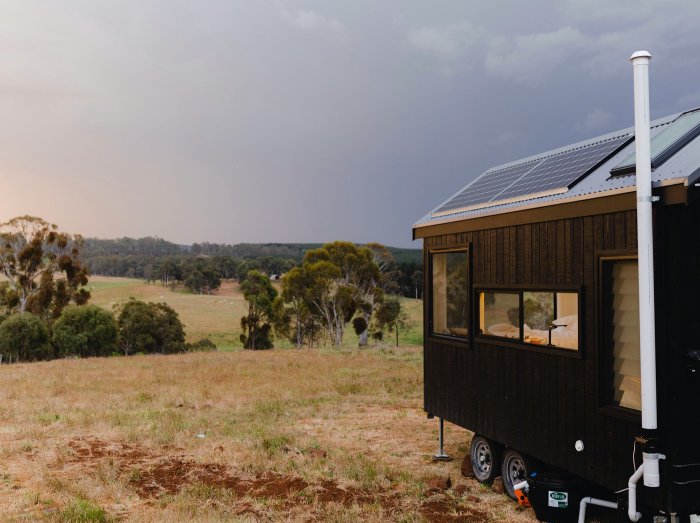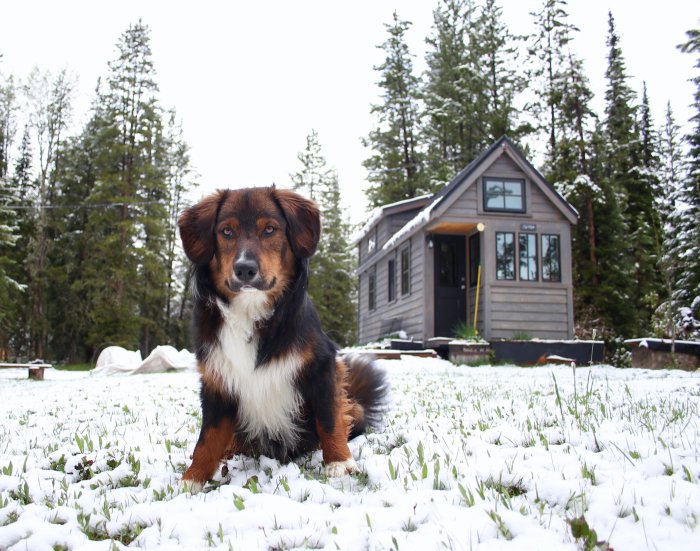The tiny house movement has been on the rise in recent years, and one look at current house prices will tell you why. It’s becoming less and less possible for the next generation to buy a house of their own, which is why many are looking for cheaper - and tinier - alternatives.
Choosing to live in a tiny house is not only cheaper in terms of utilities and property taxes, but it’s also more economical in the long run. You’ll save money on costly renovations and general fixes that come with larger homes. Plus, you don’t have as much room for unnecessary items and knick-knacks.
Going tiny means living with fewer creature comforts. That said, it doesn’t mean your home can’t be luxurious!

House Prices Are Higher Than Ever
We all know that house prices are higher than ever. In truth, few of us millennials can afford a house right now.
We probably won’t be able to afford a house in the next ten years either.
Between the older generations buying houses at all time lows and big companies buying up apartments to rent, we’re left with little options.
And for those wondering, here’s what many of our parents paid for their houses, assuming they bought in the 1970s:
- House prices in the USA in the 1970s - $17,000 / €15,830
- House prices in the UK in the 1970s - $25,000 / €23,000
And those are houses! Not little apartments.
I think many people in the older generations fail to realize that they were able to have a family, buy a house, and live comfortably on a single salary. Even if their salary was minimum wage.
Now let’s look at what we’re working with:
- House prices in the USA now - $374,900 / €349,125
- House prices in the UK now - $343,716 / €320,086
But not only have house prices shot up, so has the cost of living, and the cost to go to University. In fact, one of the only things that hasn’t gone up is the minimum wage (at least, not enough).
So, even if you spent $100,000 on a tiny house, it would still be a lot cheaper than a regular house. And chances are, you can find a decent plot of land for less than $100,000, which means you’d still have $100,000 leftover from the cost of a standard house.
That sounds like a win to me!
You’ll Save Money on Rent
In many cities around the world, people spend anywhere from 1/3-1/2 of their pay on housing. And when you factor in groceries, utilities, and general costs of living, that doesn’t leave much for saving.
Check out this table with average rental prices, costs of living, and salaries from around the world:

Source: Numbeo
*The average salary in the United States varies a great deal depending on where you look. In some cases, it’s claimed that the medium income for Americans is anywhere from $69,000-95,000 per year. However, the lowest income is around $24,000 (well below the poverty line). The discrepancies come in when you include the top 1% (who collectively have more wealth than the entire middle class).
As you can see from the table, almost everyone pays around half their income towards rent.
Let’s take a closer look at the United Kingdom. Of course, the averages there change too depending on the city and the type of job. But in general:
- The average 1 bedroom apartment costs around $1,100 (though you’d never find that in London!)
- The average person spends approximately $840 on general expenses and living.
- The average salary per month is about $3,300.
Now let’s do the math!
- $3,300 - $840 - $1,100 = $1,360
That doesn’t look too bad, right? If you put that away every month you’d have around $16,320 saved at the end of the year.
But that doesn’t account for all those takeaways, or possible car costs. It doesn’t account for holidays and birthdays and weddings.
The truth is, most people will spend close to $800 on food and drink alone! Especially if they live in a city.
And it definitely isn’t a true representation for many 20-40 year olds who earn half that amount in minimum wage jobs.
So if you take rent off the table, you’d have a lot more money left for that dream vacation!
And I know what you’re thinking:
But the tiny house costs money!
Where do you put it?
If I live in a city, how can I go tiny?
Don’t worry, we’ll get to that!
It Gives You the Freedom To Move Around
A lot of people say they want to go tiny so they can move around. But the truth is, many don’t. They find land, get set up, and stay put.
Still, that doesn’t mean they can’t move.
Imagine finding a wonderful plot of land to rent. You happily pay monthly to sit your tiny house on a farm (for example) and you get settled.

But then someone buys the plot next door and they’re loud. Maybe they have a million kids and dogs running around. Maybe they have wild parties and play music into the wee hours of the morning.
Nightmare, huh?
Not if you’re in a tiny house! Those babies can be plopped on a trailer and moved easily. It’ll cost you, of course, but who knows where you’ll end up?
Many Property Owners Are Open to Renting Plots for Tiny Houses
You’d be surprised at how many people own land they never use. Maybe they own acres and don’t know what’s at the end of their property. Perhaps they have family land or a big farm that’s not totally in use.
Either way, many of those people are open to renting to tiny house owners. They don’t take up much room and it’s income, right? Why would they turn down money for something they’re not using?
Plus, as I mentioned before, you can move easily with little to no evidence you were there in the first place.
The Problems With Going Tiny
Okay, so nothing is perfect. And in truth, going tiny isn’t for everyone. But if you’re reading this, I bet you’re at least interested.
So, let’s cover those issues I mentioned above.
Tiny Houses Aren’t Cheap
It costs money to build a tiny house. No question. If you’ve ever seen a tiny house show (I love Living Big in a Tiny House!) you’ll know that some people spend hundreds of thousands on a tiny house.
Some are huge, to be fair, and I don’t really class those as “tiny.” Still, they can cost a lot if you have someone else build it and fill it with top of the line appliances and creature comforts.
And why wouldn’t you? It’s your home - you want it to be the best, right?
But why would you spend so much money when you could buy a normal house or apartment for the close price?
Well, as we’ve covered, even if you spend $150,000 on a tiny house, it’s probably a lot cheaper than a regular house.
And it will come exactly how you want it.
Most people move into new homes and start painting and changing things. They can spend thousands on renovations, adding even more to the cost of the house.
And let’s not get into taxes, real estate fees, and inspections.
But if you build your own tiny house, it will be just how you want it, and still cost a lot less - even if you go crazy with top of the line stuff.
After all, there’s only so much you can fit inside!
And if you really want to save money, build it yourself - or come to us! Our tiny houses are CNC cut, sturdy, modern, and much more economical than many other companies!
Finding a Spot for Your Tiny House
This is one of the biggest problems I think people worry about. You’ve got the money and the builder is working away, but where can you put the house when you’re done?
Well, if you live in a big city and you want a house (any house) chances are you’re already looking to move a little bit outside the city limits. Nobody can afford a house in a city these days, so we need to look further afield.
And when you start looking, you’ll find that there are plenty of opportunities!

As mentioned, everyone from farmers to normal landowners are willing to rent a small spot for a monthly fee.
You can find them online, in Facebook groups, or just by driving around and knocking on doors. (Yes, really!)
And if you don’t want to knock, go ahead and type up a letter and pop in through the mail slot.
What can it hurt?
Of course, if you have family land, that would be much easier (though I still recommend having some kind of legal document stating your rights to park your tiny home).
The good news is that, if it’s a true tiny house - around 20 square meters - you don’t need permits or planning to park.
And if all else fails, you can find a spot in a trailer park. In fact, you’d be surprised at how many tiny houses you’ll see! It’s a huge market now and they have hookups for electricity and water right on the plot.
As for buying land, again, it would be cheaper to buy a small plot of land and build a tiny house than it would be to buy a regular house.
Chances are you can get a mortgage or loan for the smaller amount, and that gives you a lot of freedom, too.
Here in Estonia, there are thousands of plots in fields, forests, and near the sea for sale. They can cost anywhere from a few thousand to over $50,000 depending on where it is.
But if you find just the right one and are willing to put in the work, you could live right outside a city in your very own home.
Who doesn’t want that?
City Life to Tiny Living
If you live in a city and want to go tiny, you’ll have to move. There’s no way around it. There’s no extra land in London, Toronto, or New York. Nobody is building single-family homes in those cities because any free space is for parks and parking.
The only choice there is up!
So, if you’re a city guy or gal, going tiny means leaving the hustle and bustle behind and finding a place in the suburbs or even further afield.
But as we’ve already covered, you’d be surprised at what’s out there! Plus, more and more people are working from home now.
So, why not find a small bit of land and just visit the city for a day here and there? It’ll be a helluva lot cheaper!